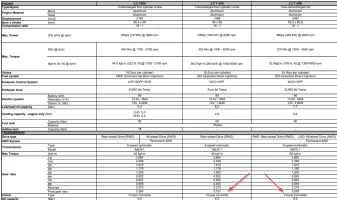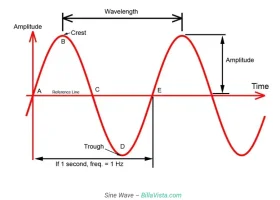Before anyone flames me, No, I don't have access to, or intimate knowledge of, how the precise algorithm Kia uses works.... what I do have is more than 25 years of working on, repairing, modifying, and designing cars, trucks and SUV's, along with a deep understanding of software programming (my 9-5 career) based on available technology and how that technology
should, in most cases, logically be programed to work together. Algorithms like these are INCREDIBLY complex and take years (or a large team of engineers) to develop.
I've read through this entire post, and unless I missed something, no where has anyone mentioned this simple fact:
TC (Traction Control) and ESC (Electronic Stability Control) are 2 inherently different features that function differently for different situations, but often function in lock-step with each other, based on the condition that the car "thinks" is happening. (The LSD (Limited Slip Differential) is a 3rd factor that could come into play; I'll come back to this later...)
Generally, this is determined by data coming from a combination of all 4 wheel speed sensors, the transmission speed sensor, the vehicle speed sensor, and yes, the ECM itself (ECU, PCM, whatever acronym you want to use here, its "the computer" for the car, and/or any of the many other computers the cars has; BCM, TCM, ABS, Air bag module, ect), because it/they contain an Accelerometer and a Gyroscope, just like your smart phone does.
Accelerometers measure linear acceleration (specified in mV/g) along one or several axis and a Gyroscope measures angular velocity (specified in mV/deg/s). Accelerometers and a Gyroscopes have been used for a long time in automobiles for TC and ESC as well as detecting car crashes and for triggering airbags at just the right moment. They have many applications in mobile devices like switching between portrait and landscape modes, tap gestures to change to the next song, tapping through clothing when the device is in a pocket, or anti-blur capturing and optical image stabilization.
TC is for just want it says, TRACTION. Primarily, straight line traction (Accelerometers measure linear acceleration (specified in mV/g) along one or several axis). Starting in the early early 2000's in the USA, most manufactures leveraged the ABS system to engage the brakes to control
individual wheel spin, and as the years went by, they shifted to cutting fuel, then with drive-by-wire throttle bodies, moved to an electronic takeover of the throttle body to limit engine power, and hence, wheel spin for when
all drive wheels loose traction (here there would be different rules for RWD, FWD or AWD applications). TC is pretty black/white as far as the rules on how how/when it activates: "Are the wheel(s) spinning faster than the car, and/or other wheels, is/are traveling = YES or NO". As a result, either cut power to the engine or use the ABS system to pump the brakes at whatever tire is spinning faster, to slow it down and gain traction.
ESC is for other situations when the car is determined to potentially be "out of control". What is "out of control" is a grey area, and therefore is a matter of opinion and perspective, so the rules are not as simple as they are for TC. The Gyroscope measures angular velocity (specified in mV/deg/s) and combines that data with vehicle speed, acceleration, braking, and asks questions like: is the driver on the gas?, or the brake?, or neither?, How much G forces are being applied? on what axis? multiple axis? are any wheels spinning?, which ones? or are they all spinning? and a whole host of other questions that are answered by the data. The software takes those questions (the rules) and answers (the data) and determines that: if "THIS" is happening, then do "THAT". This is all based on what's programmed into the data table. When you break it all down, its quite incredible that It does all this..... in
microseconds.
Keep in mind that the car is "Reactive", not "Proactive". It can only react to things that have already happened. It does this INCREDIBLY fast, but its still a "Reaction" to a known event. However, new technology is breaching the gap between "Reactive" and "Proactive" with the introduction of things like: front end radar and camera systems (think lane assist, adaptive cruise, automatic braking, ect), and to some degree impact warning sensors. Now the car actually
can "SEE" to some degree and make "Proactive" decisions for the driver. This added input can change how ESC behaves.
@7Andrei7 The Stinger has a "mechanical" LSD (Limited Slip Differential); its not controlled by the computer. She's old school, which I'm glad about, because as a driving enthusiasts with a "spirited/aggressive" driving style, a mechanical LSD (Limited Slip Differential) is WAYYYY more predictable than the electronic versions, IMO. HOWEVER, if the car comes with an LSD (Limited Slip Differential) from the factory or not, its very likely they have different software packages in them to determine how TC and ESC
should act in specific situations because, by the nature of its existence, the inputs received by the ECM will be different when an LDS is present and is mechanically reacting, and therefore changing the inputs going to the ECM in real time. If I am right, its likely that since you altered your car with the addition of the mechanical LSD (Limited Slip Differential), and the software is the package for the Non-LSD (Limited Slip Differential) version, it may never act exactly like a factory equipped LSD (Limited Slip Differential) car.
We aren't driving Tesla's

here; and unlike Tesla's, to my knowledge, there isn't an option offered by Kia to replace, add or subtract specific pieces of software on individual vehicles. I have asked several dealers about this already, because my GTS does not come with a lot of the software features the GT2's have, and I have inquired about adding them; I've been told that not possible. The reason I reference Tesla here is because that IS something they offer; you can "A' La Carte" purchase individual software features (for a $$$ of course) and download them into your car. I'm not telling you not to ask; go do your own research and try to find out. If you do, please let me know......
Someone mentioned in an earlier post in this thread that we are raising a generation of unskilled drivers that rely on technology like TC and ESC..... well, you can thank the politicians who vote on the laws in the USA; they are the ones who voted to mandate safety features like ABS, air bags, seat belts, and yes, TC, ESC, back up cameras, ect. in this country. The manufactures are "Forced" to have these things as standard features to sell their cars in the USA.
"The NHTSA required all new passenger vehicles sold in the US to be equipped with ESC as of the 2012 model year, and estimated it will prevent 5,300–9,600 annual fatalities."
In summary, I dont think its realistic that we as the driver of the car, can realistically say "the car should have done this or the car should have done that" in any situation. There are simply too many variables related to how the car is equipped, combined with what driving mode the car is set at, and with what the driver is doing, what the sensors are telling the ECM, and how the software is trying to react; it's all happening too quickly in real time.
IMO, the TC and ESC systems I had on my K5 and now on my K8, are pretty damn good. The K5's system saved my A$$ a couple times. As for the K8, I've gotten it sideways in both Comfort and Sport; I took my foot off the pedals and just steered it toward safety and it did what it need to do to keep me out of the ditch. I think its "just right" on the edge of fun and safety. If you don't want the nanny's, turn them off and its all up to you.
At the end of the day, you cant re-write the laws of physics on our planet (out in the universe is another matter). TC, ESC, Air bags, adaptive cruise, self-drive, self-park, ect; All these features can't solve every problem and objects in motion tend to stay in motion, until they encounter an equal or greater force to counter-balance them (or you hit a ditch, guardrail or another car).
All of this is just my $0.02


 here; and unlike Tesla's, to my knowledge, there isn't an option offered by Kia to replace, add or subtract specific pieces of software on individual vehicles. I have asked several dealers about this already, because my GTS does not come with a lot of the software features the GT2's have, and I have inquired about adding them; I've been told that not possible. The reason I reference Tesla here is because that IS something they offer; you can "A' La Carte" purchase individual software features (for a $$$ of course) and download them into your car. I'm not telling you not to ask; go do your own research and try to find out. If you do, please let me know......
here; and unlike Tesla's, to my knowledge, there isn't an option offered by Kia to replace, add or subtract specific pieces of software on individual vehicles. I have asked several dealers about this already, because my GTS does not come with a lot of the software features the GT2's have, and I have inquired about adding them; I've been told that not possible. The reason I reference Tesla here is because that IS something they offer; you can "A' La Carte" purchase individual software features (for a $$$ of course) and download them into your car. I'm not telling you not to ask; go do your own research and try to find out. If you do, please let me know......



